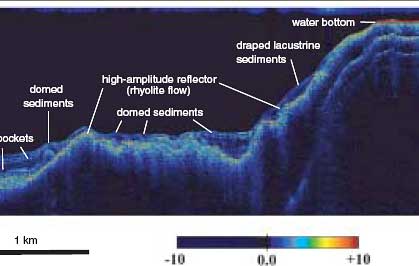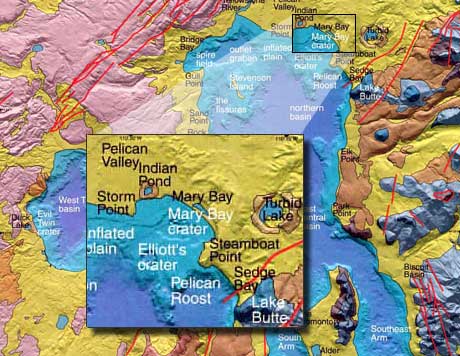
|
Lobby > Exhibits > Scientific Research > Research in The Deep > Charting Yellowstone Lake Charting Yellowstone LakeThe study also revealed a domed area with hydrothermal vents within Yellowstone Lake. The lake bottom is composed of sediment-covered lava flows. Scientist think gases accumulate in the hydrothermal system and uplift the sediments to some extent. At this time the feature is not growing. No recent temperature or chemical changes have occurred in nearby hydrothermal vents to suggest that a hydrothermal explosion is imminent.  Such explosions occur when hot water in a hydrothermal system suddenly flashes to steam, breaking the overlying rocks, and throwing them into the air.
Perhaps hydrothermal explosions are triggered by changes in a feature's plumbing system, or when the system becomes sealed by a caprock of silica and the cap is suddenly cracked.
 Next | 1 > 2 > 3 > 4 | Next Section: Spires of the Deep |
|
||||||||||||||||||||||||||||||


